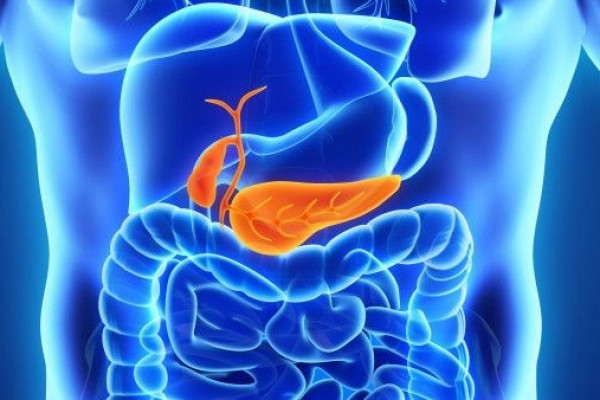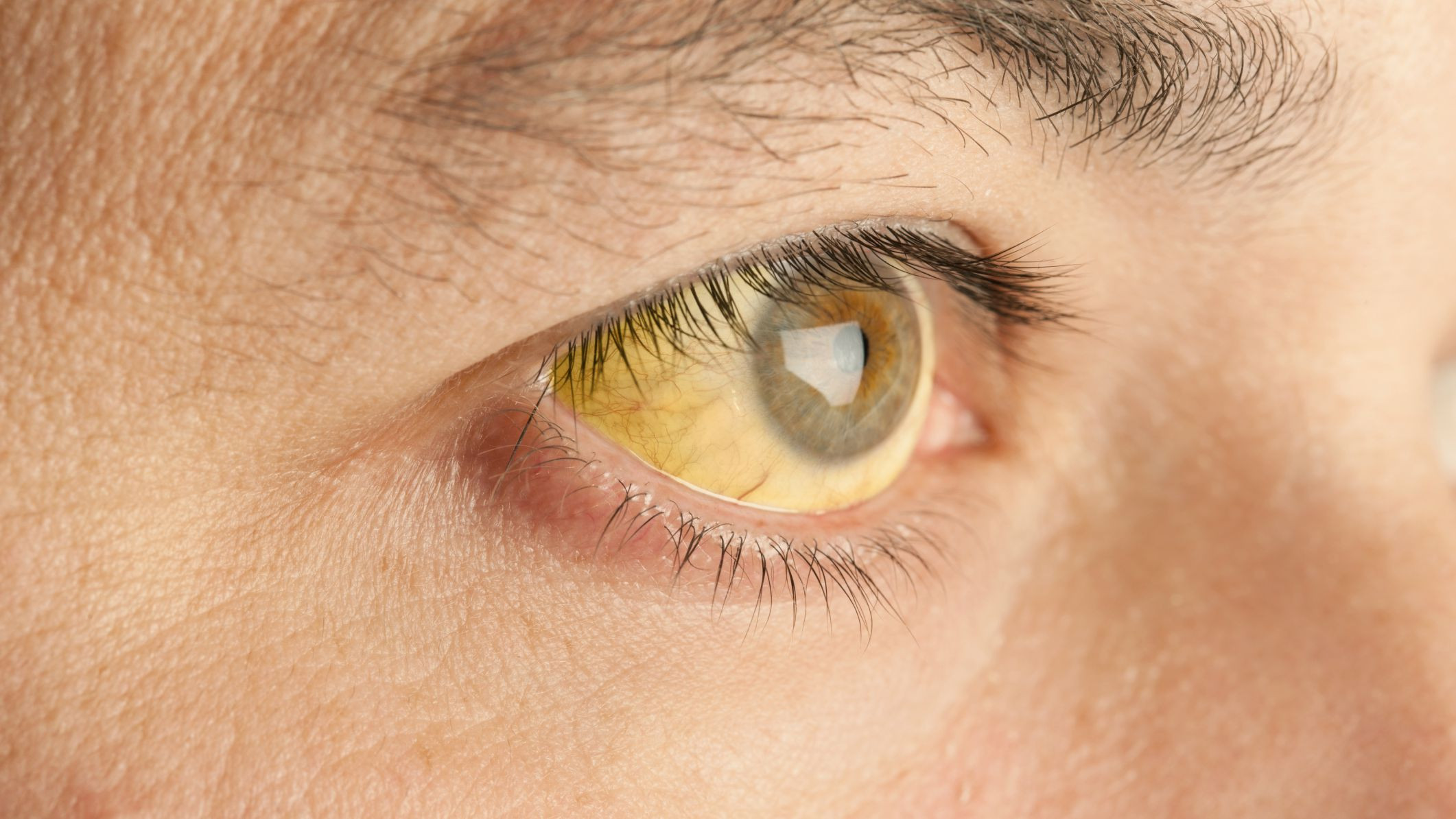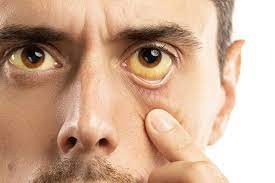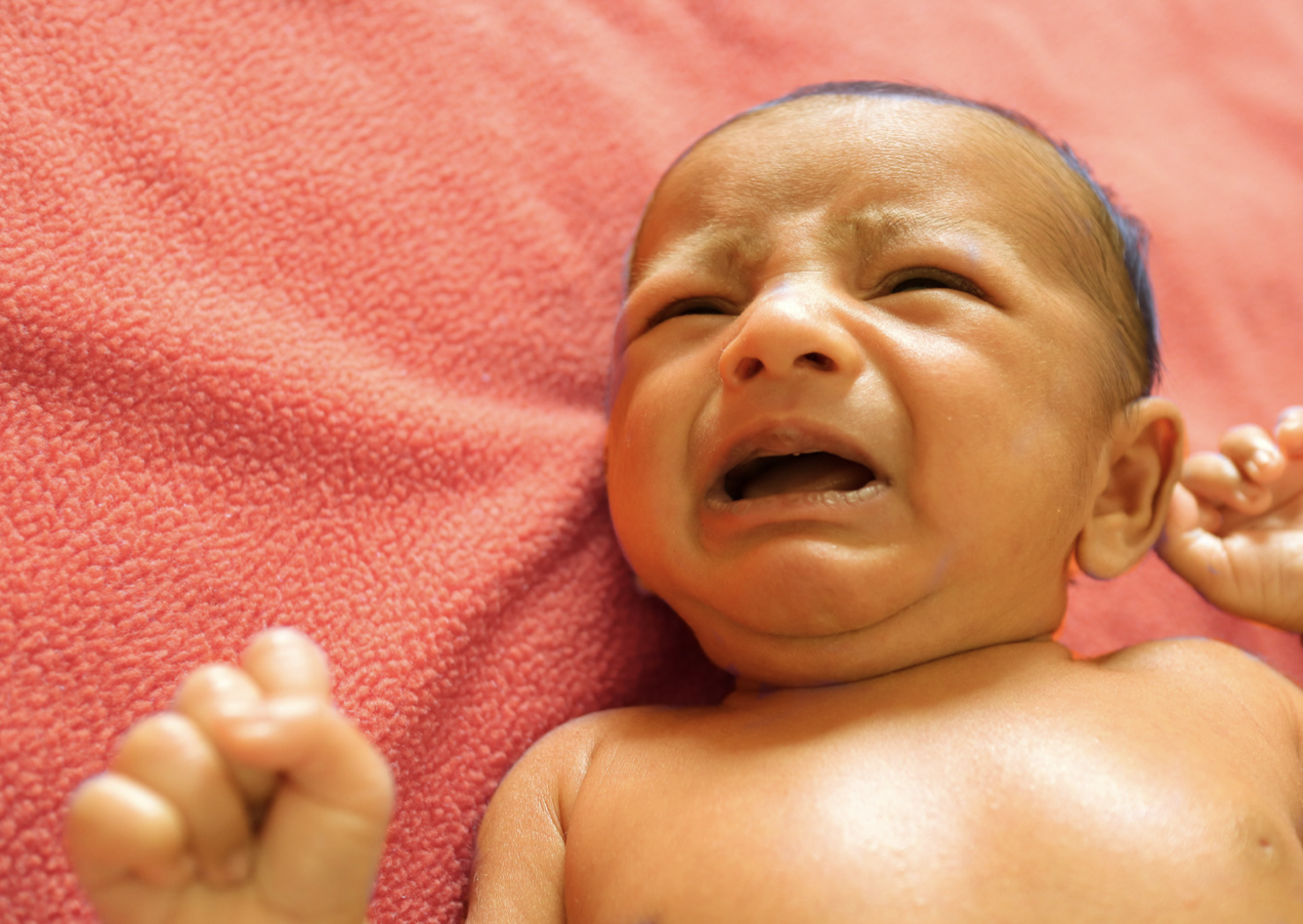Definisi
Kolangiokarsinoma adalah sebuah tipe kanker yang terbentuk di saluran empedu. Saluran ini menghubungkan hati, kantong empedu, pankreas, dan usus halus, dan berfungsi untuk mengalirkan getah empedu. Penyakit ini merupakan keganasan hati kedua yang paling banyak di dunia, setelah karsinoma hepatoseluler di hati. Penyakit ini terjadi pada sekitar 1-6 orang per 100.000 penduduk dunia.
Penyebab
Kolangiokarsinoma terjadi apabila sel-sel pada saluran empedu mengalami mutasi atau perubahan genetik. Perubahan genetik ini menyebabkan sel-sel tersebut tumbuh tidak terkontrol membentuk massa dan bahkan dapat menyerang sel-sel tubuh yang sehat. Sebagian besar kasus kolangiokarsinoma terjadi tanpa pemicu dan tidak memiliki faktor risiko spesifik. Namun, ada beberapa kasus yang terkait dengan peradangan saluran empedu (kolangitis) dan infeksi parasit yang berkepanjangan. Kedua hal ini merusak sel-sel sehat, sehingga tubuh memicu produksi sel-sel saluran empedu baru dalam jumlah banyak. Sel-sel ini juga dipaksa untuk membelah lebih cepat agar dapat menggantikan sel-sel yang rusak. Namun, pada suatu titik, dapat terjadi pembelahan yang cacat sehingga ada perubahan susunan genetik pada sel tersebut, yang kemudian menyebabkan kerja sel berubah.
Sel-sel ini tumbuh relatif lambat dan menyerang lapisan saluran empedu. Selanjutnya, sel-sel ini dapat menyebar ke hati, pembuluh darah porta yang ada di hati, serta kelenjar getah bening di dekatnya. Pada kondisi yang lebih parah, sel-sel ini dapat ditemukan di bagian tubuh lain seperti paru-paru karena menyebar lewat pembuluh darah dan limfe.
Faktor Risiko
Beberapa faktor risiko yang dapat meningkatkan kejadian kolangiokarsinoma terkait dengan saluran empedu.
- Peradangan saluran empedu (kolangitis), terutama jenis primary sclerosing cholangitis (PSC) menyebabkan peradangan saluran empedu yang diikuti dengan pengerasan dan perubahan jaringan menjadi jaringan parut.
- Penyakit hati kronik seperti hepatitis serta perlemakan hati akibat alkohol atau nonalkohol dapat menyebabkan bekas luka pada hati, yang selanjutnya meningkatkan risiko kolangiokarsinoma.
- Infeksi parasit berupa cacing hati juga dapat meningkatkan risiko ini, terutama terjadi akibat makan ikan mentah atau tidak matang.
Selain itu, faktor risiko juga dapat berupa kelainan saluran empedu bawaan, seperti kista saluran empedu. Beberapa kelainan genetik seperti fibrosis kistik dan sindroma Lynch dapat meningkatkan risiko kolangiokarsinoma. Usia juga dapat menjadi faktor risiko, karena kolangiokarsinoma pada umumnya terjadi pada orang berusia di atas 50 tahun. Kebiasaan merokok juga meningkatkan risiko ini. Penyakit diabetes melitus, baik tipe 1 dan tipe 2, meningkatkan risiko kolangiokarsinoma.
Gejala
Tanda dan gejala kolangiokarsinoma adalah:
- Kulit dan mata kuning
- BAB dempul (berwarna pucat)
- Kencing berwarna seperti teh
- Gatal seluruh tubuh
- Penurunan berat badan drastis yang tidak diinginkan
- Nyeri perut.
Namun, di antara seluruh gejala tersebut, gejala yang paling sering muncul adalah kulit dan mata kuning. Gejala ini dapat terjadi mulai dari stadium awal maupun stadium lanjut, yang menandai adanya kemacetan aliran getah empedu. Gatal pada seluruh tubuh pada umumnya diawali dengan kuning, dan terjadi akibat asam empedu yang beredar di seluruh tubuh. Penurunan berat badan dapat ditemukan maupun tidak. Sementara itu, nyeri perut biasanya ditemukan pada stadium lanjut, yang dijelaskan sebagai nyeri tumpul di perut bagian kanan atas.
Diagnosis
Untuk mendiagnosis kolangiokarsinoma, pemeriksaan langsung dapat dilakukan untuk mencari tanda dan gejala di atas, ditambah dengan pembesaran kelenjar getah bening di perut. Pemeriksaan laboratorium yang dapat dilakukan berupa pemeriksaan enzim hati, alkalin fosfatase (ALP), dan bilirubin. Perbedaan hasil laboratorium ini dapat membantu dokter memperkirakan posisi kanker, apakah di luar hati (ekstrahepatik) atau di dalam hati (intrahepatik). Pemeriksaan lain yang dapat dilakukan berupa penanda tumor seperti CA 19-9, antigen karsinoembrionik, dan alfa-fetoprotein (AFP).
Setelah itu, pemeriksaan pencitraan dapat dilakukan tergantung ketersediaan fasilitas dan perkiraan posisi kanker. Pemeriksaan yang cukup terjangkau adalah ultrasonografi (USG), yang dapat mendeteksi adanya pelebaran saluran empedu dan menyingkirkan kemungkinan adanya batu empedu. Di fasilitas kesehatan yang lebih lengkap, pemeriksaan computed tomography scan (CT scan) menjadi pilihan awal, karena dapat mendeteksi adanya kanker dengan cepat. Pemeriksaan dengan magnetic resonance imaging (MRI) dapat pula dilakukan untuk melihat jaringan hati. Pemeriksaan lainnya seperti Positron Emission Tomography (PET) juga dapat dilakukan, namun jarang tersedia di Indonesia.
Baku emas pemeriksaan kolangiokarsinoma adalah pengambilan jaringan kanker untuk diperiksa di laboratorium. Pengambilan jaringan ini dapat menggunakan sikat khusus, jarum halus, serta pengambilan jaringan dipandu CT. Pemeriksaan ini terutama dilakukan untuk menegakkan diagnosis pasti sebelum melakukan tata laksana.
Seluruh pemeriksaan ini akan digunakan untuk menentukan stadium keparahan kanker, yang selanjutnya akan digunakan sebagai pertimbangan tata laksana.
Tata laksana
Tata laksana kolangiokarsinoma dapat bertujuan untuk mengurangi gejala atau menyembuhkan, tergantung dari keparahannya. Satu-satunya tata laksana yang dapat menyembuhkan penyakit ini adalah pembedahan, namun pembedahan sendiri sangat tergantung pada posisi tumor, keterlibatan saluran empedu, keterlibatan kelenjar getah bening, keterlibatan organ lainnya, serta hubungan tumor dengan pembuluh darah di dekatnya. Biasanya, tumor di luar hati (ekstrahepatik) dapat dioperasi. Namun, tumor ini dapat muncul beberapa bulan atau tahun kemudian setelah operasi dilakukan, meskipun operasi berhasil.
Pada stadium lanjut, pembedahan tidak dianjurkan karena lebih banyak membawa bahaya dibandingkan manfaat. Oleh karena itu, tujuan terapi adalah untuk mengurangi gejala dan meningkatkan kualitas hidup pasien. Misalnya, pada pasien dengan aliran getah empedu yang macet, dapat dilakukan pemasangan stent untuk memberikan jalur bagi getah empedu. Pilihan lainnya adalah menyambungkan saluran empedu pada satu bagian dengan bagian lainnya, disebut sebagai bypass. Selain itu, transplantasi hati dapat dipertimbangkan untuk meningkatkan jangka waktu hidup, namun hanya pada pasien tertentu yang memenuhi syarat.
Terapi lainnya dapat berupa terapi radiasi. Biasanya, terapi ini dilakukan untuk mengecilkan tumor supaya dapat dioperasi. Terapi ini biasanya dilakukan bersama dengan pemberian obat-obatan pembunuh sel kanker (kemoterapi). Terapi-terapi ini biasanya dilakukan sebelum pembedahan dan melibatkan beberapa cabang kedokteran seperti hematologi-onkologi medik, radiologi onkologi, serta bedah onkologi. Onkologi sendiri merujuk pada cabang kedokteran yang mempelajari kanker.
Komplikasi
Komplikasi kolangiokarsinoma dapat terjadi akibat kanker itu sendiri, pembedahan, dan dari terapi radiasi serta kemoterapi. Orang dengan kondisi ini rentan mengalami kolangitis akibat infeksi yang selanjutnya menyebabkan penyumbatan saluran empedu. Selain itu, orang dengan kolangiokarsinoma lebih rentan mengalami pengerasan hati (sirosis) akibat adanya penyebaran sel kanker atau peradangan saluran empedu yang mengakibatkan pengerasan sel. Setelah pembedahan dilakukan, komplikasi yang sering terjadi adalah kemunculan tumor kembali setelah beberapa waktu.
Pencegahan
Untuk menurunkan risiko kolangiokarsinoma, Anda dapat melakukan beberapa hal.
- Berhenti merokok. Apabila Anda adalah seorang perokok, berhenti merokok merupakan jalan terbaik untuk menurunkan risiko ini. Jika Anda telah mencoba berhenti sebelumnya namun gagal, Anda dapat berkonsultasi kepada dokter untuk bekerja sama menghilangkan kebiasaan merokok.
- Hindari/batasi konsumsi alkohol. Anda dapat menurunkan risiko penyakit hati dengan membatasi atau tidak mengonsumsi minuman beralkohol. Batas minum alkohol yang normal adalah satu sajian per hari untuk wanita dan dua sajian per hari untuk pria.
- Jaga berat badan. Anda dapat menjaga berat badan ideal untuk mencegah penyakit ini.
- Jauhi bahan kimia berbahaya. Jika Anda bekerja dengan bahan-bahan kimia berbahaya, sebaiknya Anda mematuhi peraturan keselamatan.
Kapan harus ke dokter?
Jika Anda mengalami kelelahan yang menetap, nyeri perut, kulit dan mata kuning, atau berbagai tanda dan gejala lainnya yang mengganggu, segeralah berkonsultasi dengan dokter. Anda selanjutnya dapat dirujuk ke dokter penyakit dalam konsultan gastroenterologi, yang mempelajari saluran pencernaan.
- dr Nadia Opmalina
Cholangiocarcinoma (bile duct cancer) - Symptoms and causes. (2021). Retrieved 25 January 2022, from https://www.mayoclinic.org/diseases-conditions/cholangiocarcinoma/symptoms-causes/syc-20352408
Darwin, P. (2022). Cholangiocarcinoma: Practice Essentials, Pathophysiology, Epidemiology. Retrieved 25 January 2022, from https://emedicine.medscape.com/article/277393-overview
Garikipati, S., & Roy, P. (2021). Biliary Tract Cholangiocarcinoma. Retrieved 25 January 2022, from https://www.ncbi.nlm.nih.gov/books/NBK560708/












